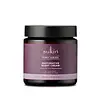What's inside
What's inside
 Key Ingredients
Key Ingredients

 Benefits
Benefits

 Concerns
Concerns

 Ingredients Side-by-side
Ingredients Side-by-side

Water
Skin ConditioningGlycerin
HumectantDimethicone
EmollientCetearyl Olivate
Sorbitan Olivate
EmulsifyingSodium Hyaluronate
HumectantSerine
MaskingGlycine
BufferingAlanine
MaskingThreonine
Arginine
MaskingProline
Skin ConditioningLysine Hcl
Skin ConditioningGlutamic Acid
HumectantSodium PCA
HumectantPCA
HumectantSodium Lactate
BufferingUrea
BufferingSodium Chloride
MaskingCitric Acid
BufferingBetaine
HumectantAllantoin
Skin ConditioningFructose
HumectantMaltose
MaskingTrehalose
HumectantGlucose
HumectantPentylene Glycol
Skin ConditioningSynthetic Beeswax
Emulsion StabilisingPolyacrylate Crosspolymer-6
Emulsion StabilisingDimethicone Crosspolymer
Emulsion StabilisingDimethiconol
EmollientEthylhexylglycerin
Skin ConditioningCaprylyl Glycol
EmollientSodium Hydroxide
BufferingWater, Glycerin, Dimethicone, Cetearyl Olivate, Sorbitan Olivate, Sodium Hyaluronate, Serine, Glycine, Alanine, Threonine, Arginine, Proline, Lysine Hcl, Glutamic Acid, Sodium PCA, PCA, Sodium Lactate, Urea, Sodium Chloride, Citric Acid, Betaine, Allantoin, Fructose, Maltose, Trehalose, Glucose, Pentylene Glycol, Synthetic Beeswax, Polyacrylate Crosspolymer-6, Dimethicone Crosspolymer, Dimethiconol, Ethylhexylglycerin, Caprylyl Glycol, Sodium Hydroxide
Water
Skin ConditioningSesamum Indicum Seed Oil
EmollientCetyl Alcohol
EmollientGlyceryl Stearate
EmollientGlycerin
HumectantDecyl Oleate
EmollientCoco-Caprylate
EmollientTheobroma Cacao Seed Butter
EmollientRibose
HumectantHydrolyzed Vegetable Protein
Skin ConditioningRosa Canina Fruit Oil
EmollientMacadamia Ternifolia Seed Oil
EmollientSimmondsia Chinensis Seed Oil
EmollientArgania Spinosa Kernel Oil
EmollientEuphorbia Cerifera Wax
Sodium Stearoyl Glutamate
CleansingAdansonia Digitata Fruit Extract
EmollientHibiscus Sabdariffa Flower Extract
Skin ConditioningEuterpe Oleracea Fruit Extract
Lycium Barbarum Fruit Extract
AstringentXanthan Gum
EmulsifyingTocopherol
AntioxidantCitrus Tangerina Peel Oil
MaskingCitrus Nobilis Peel Oil
MaskingLavandula Angustifolia Oil
MaskingVanillin
MaskingDaucus Carota Sativa Seed Oil
EmollientLactic Acid
BufferingPhenoxyethanol
PreservativeBenzyl Alcohol
PerfumingEthylhexylglycerin
Skin ConditioningSodium Benzoate
MaskingPotassium Sorbate
PreservativeLimonene
PerfumingLinalool
PerfumingWater, Sesamum Indicum Seed Oil, Cetyl Alcohol, Glyceryl Stearate, Glycerin, Decyl Oleate, Coco-Caprylate, Theobroma Cacao Seed Butter, Ribose, Hydrolyzed Vegetable Protein, Rosa Canina Fruit Oil, Macadamia Ternifolia Seed Oil, Simmondsia Chinensis Seed Oil, Argania Spinosa Kernel Oil, Euphorbia Cerifera Wax, Sodium Stearoyl Glutamate, Adansonia Digitata Fruit Extract, Hibiscus Sabdariffa Flower Extract, Euterpe Oleracea Fruit Extract, Lycium Barbarum Fruit Extract, Xanthan Gum, Tocopherol, Citrus Tangerina Peel Oil, Citrus Nobilis Peel Oil, Lavandula Angustifolia Oil, Vanillin, Daucus Carota Sativa Seed Oil, Lactic Acid, Phenoxyethanol, Benzyl Alcohol, Ethylhexylglycerin, Sodium Benzoate, Potassium Sorbate, Limonene, Linalool
 Reviews
Reviews

Ingredients Explained
These ingredients are found in both products.
Ingredients higher up in an ingredient list are typically present in a larger amount.
Ethylhexylglycerin (we can't pronounce this either) is commonly used as a preservative and skin softener. It is derived from glyceryl.
You might see Ethylhexylglycerin often paired with other preservatives such as phenoxyethanol. Ethylhexylglycerin has been found to increase the effectiveness of these other preservatives.
Glycerin is already naturally found in your skin. It helps moisturize and protect your skin.
A study from 2016 found glycerin to be more effective as a humectant than AHAs and hyaluronic acid.
As a humectant, it helps the skin stay hydrated by pulling moisture to your skin. The low molecular weight of glycerin allows it to pull moisture into the deeper layers of your skin.
Hydrated skin improves your skin barrier; Your skin barrier helps protect against irritants and bacteria.
Glycerin has also been found to have antimicrobial and antiviral properties. Due to these properties, glycerin is often used in wound and burn treatments.
In cosmetics, glycerin is usually derived from plants such as soybean or palm. However, it can also be sourced from animals, such as tallow or animal fat.
This ingredient is organic, colorless, odorless, and non-toxic.
Glycerin is the name for this ingredient in American English. British English uses Glycerol/Glycerine.
Learn more about GlycerinWater. It's the most common cosmetic ingredient of all. You'll usually see it at the top of ingredient lists, meaning that it makes up the largest part of the product.
So why is it so popular? Water most often acts as a solvent - this means that it helps dissolve other ingredients into the formulation.
You'll also recognize water as that liquid we all need to stay alive. If you see this, drink a glass of water. Stay hydrated!
Learn more about Water